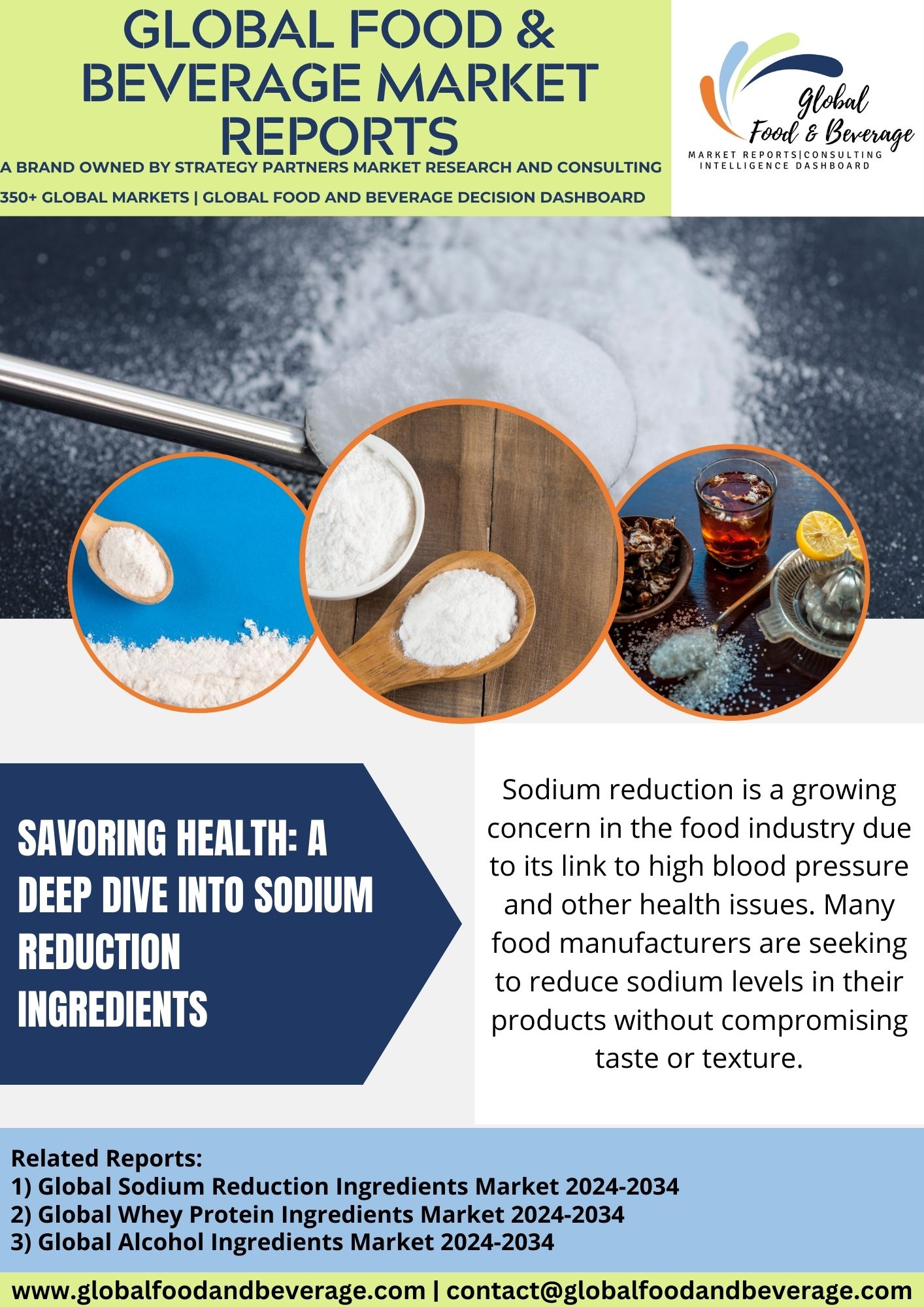Sodium reduction ingredients have become a focal point in the food industry as consumers and health organizations emphasize the importance of lowering sodium intake for improved public health. Excessive sodium consumption is linked to various health issues, including hypertension and cardiovascular diseases. In response, food manufacturers are actively seeking ways to reduce sodium content in their products without compromising taste.
One common sodium reduction ingredient is potassium chloride, a mineral salt that can serve as a partial or complete substitute for sodium chloride (table salt). Potassium chloride not only imparts a salty flavor to food but also provides essential potassium, a nutrient that plays a vital role in maintaining proper heart and muscle function. The use of potassium chloride aligns with efforts to enhance the nutritional profile of foods while lowering sodium levels.
Flavor enhancers and modulators are another category of sodium reduction ingredients. These ingredients, such as umami compounds and certain amino acids, enhance the perception of saltiness without increasing sodium content. By amplifying the savory notes in food, flavor enhancers allow for a reduction in the overall amount of salt used in formulations.
Advancements in ingredient technology have led to the development of specialized sodium reduction blends. These blends often combine various ingredients, such as mineral salts, yeast extracts, and herbs, to mimic the taste of salt and enhance overall flavor. They offer a comprehensive solution for achieving sodium reduction goals without sacrificing the palatability of the end product.
The push for sodium reduction aligns with global public health initiatives and regulatory efforts to address diet-related health issues. Food manufacturers, recognizing the importance of sodium reduction, are actively exploring and implementing these ingredients in their formulations. The quest for effective sodium reduction solutions reflects an industry-wide commitment to promoting healthier food choices and addressing the impact of excessive sodium intake on public health.
ADVANCEMENT:
The advancement in sodium reduction ingredients represents a pivotal step in addressing health concerns related to high sodium consumption. Historically, reducing sodium in food without compromising taste posed a significant challenge. However, recent innovations have ushered in a new era of sodium reduction strategies.
Cutting-edge technologies and ingredient formulations now allow for the creation of sodium reduction ingredients that effectively mimic the taste and functionality of salt. These innovations enable food manufacturers to reduce sodium content in their products without sacrificing the sensory appeal that salt imparts. This is particularly crucial given the well-established link between high sodium intake and health issues like hypertension.
Moreover, the sodium reduction landscape has witnessed the emergence of natural flavor enhancers and umami-boosting ingredients. These alternatives provide a savory taste profile without the need for excessive salt, aligning with consumer preferences for cleaner labels and healthier food choices.
In response to growing consumer awareness and demand for reduced-sodium options, food scientists and manufacturers continue to explore novel approaches. The ongoing advancements in sodium reduction ingredients not only contribute to improving public health but also showcase the industry’s commitment to delivering flavorful and healthier food products. As these innovations evolve, they hold the potential to reshape dietary norms and promote a more heart-healthy approach to food consumption.
CHALLENGE:
Sodium reduction ingredients, aimed at addressing health concerns related to excessive salt intake, face challenges in the food industry. One significant challenge is achieving sodium reduction without compromising taste. Salt plays a crucial role in flavor enhancement, and finding suitable alternatives that provide the desired taste while lowering sodium content is a continuous challenge for formulators.
Regulatory compliance and labeling complexities add to the challenges. Different regions have varying regulations regarding sodium content in foods, and ensuring compliance while meeting consumer taste expectations is complex. Additionally, addressing health claims and nutritional labeling requirements poses challenges for manufacturers seeking to communicate the benefits of sodium reduction.
Consumer acceptance and taste preferences are ongoing hurdles. Consumers are accustomed to the taste of salt in their food, and a sudden reduction may lead to a perceived loss of flavor. Educating consumers about the benefits of sodium reduction and gradually acclimating taste preferences are challenges in promoting healthier food choices.
Supply chain considerations impact the industry. The production of sodium reduction ingredients often involves specific sources or manufacturing processes. Ensuring a stable supply chain while addressing sustainability concerns, ethical sourcing, and potential supply chain disruptions is crucial for the industry’s resilience.
Technological advancements and taste masking innovation are critical for success. Developing sodium reduction ingredients that effectively mimic the taste and functionality of salt, as well as incorporating taste masking technologies, requires ongoing research and investment in technology.
CONCLUSION:
In conclusion, the sodium reduction ingredients market is witnessing significant growth, propelled by global initiatives to address health concerns associated with high sodium intake. As consumers increasingly prioritize healthier choices, the demand for ingredients that reduce sodium without compromising taste intensifies. Innovations in potassium-based substitutes, sea salt alternatives, and flavor enhancers contribute to market expansion. With a focus on promoting heart health and addressing lifestyle-related diseases, sodium reduction ingredients play a crucial role. Ongoing research and development efforts, coupled with the industry’s commitment to enhancing food products, position this market for sustained growth. As health-conscious trends prevail, sodium reduction ingredients offer promising opportunities for manufacturers globally.
